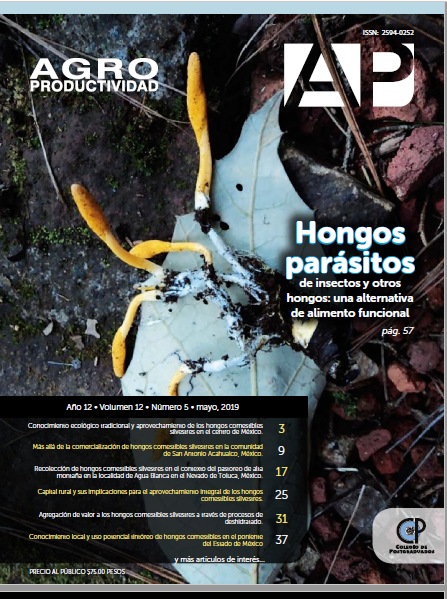PARASITE FUNGI OF INSECTS AND OTHER MUSHROOMS: A FUNCTIONAL FOOD ALTERNATIVE
Main Article Content
Keywords
traditional knowledge, secondary metabolites, cordycepin, Cordyceps militaris, Tolypocladium, ophiosetin, ophiocordin.
Abstract
Objective: Analyze the potential for the use as functional food of wild edible mushrooms species registered in Mexico and in the world.
Design, methodology and approximation: To make this determination, three variables were considered: its traditional use, its in vitro culture and the main metabolites that produce these mushrooms.
Results: Worldwide, it is estimated that there are 500 species, of which only commercially used as a source of functional food to Ophiocordyceps sinensis and Cordyceps militaris because they are attributed antioxidant, antitumor, immunostimulant and aphrodisiac properties, among others. In Mexico, the potential as a functional food for entomopathogenic species is unknown and only the use of Tolypocladium ophioglossoides and T. capitatum by the Nahuas in Central Mexico is known.
Limitations and implications: The analyzes have only been carried out in the laboratory.
Findings and conclusions: The species with the highest potential for use as a functional food in Mexico are Cordyceps militaris, C. pruinosa and Tolypocladium ophioglossoides, producing most of the secondary metabolites of interest to entomopathogens, among which cordycepin stands out for its antitumor property, and polysaccharides with multiple properties such as antitumor, stimulant immune system and antibacterial, among others.

